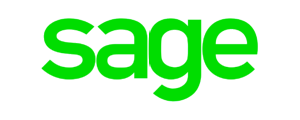Standing order vs. Direct Debit: Which payment method is right for your business?
In the intricate world of financial transactions, businesses face a pivotal decision when selecting the appropriate payment method to manage their cash flows effectively. Among the myriad options available, standing orders and direct debits emerge as prominent contenders, each presenting unique advantages and considerations. In this in-depth analysis, we delve into the intricacies of standing orders and direct debits, providing comprehensive insights to assist businesses in making informed decisions tailored to their specific needs and objectives.
Understanding Standing Orders:
A standing order is a payment arrangement initiated by the payer to transfer a predetermined amount of money to another party at regular intervals. Unlike direct debits, where the recipient initiates the transaction, standing orders are set up by the payer through their bank or financial institution. Once established, standing orders execute automatically according to the specified frequency and amount, providing a convenient and predictable means of recurring payments.
Pros of Standing Orders:
- Control and Flexibility: Standing orders afford payers a high degree of control over the payment amount and schedule. This autonomy enables businesses to tailor payments to their specific needs, accommodating variable amounts or irregular intervals as necessary.
- Transparency and Tracking: Payers receive notifications for each standing order payment, enhancing transparency and facilitating easy tracking of transactions. This visibility enables businesses to maintain accurate records and monitor their financial commitments effectively.
- Cost-Effectiveness: Standing orders typically incur lower transaction fees compared to direct debits, making them a cost-effective option for businesses looking to minimise overhead costs associated with payment processing.
- Predictability: With standing orders, businesses can rely on consistent and predictable payment schedules, enabling better cash flow management and financial planning.
Cons of Standing Orders:
- Manual Setup and Management: Setting up and managing standing orders require manual intervention by the payer, which can be time-consuming and prone to errors. Businesses must ensure the accuracy of payment instructions and update standing orders as necessary to avoid disruptions.
- Lack of Payment Guarantee: Unlike direct debits, standing orders do not offer the same level of payment guarantee or protection against payment failures. In the event of insufficient funds or other payment issues, standing orders may fail, leading to potential disruptions in service or additional fees.
Understanding Direct Debits:
Direct debits are payment instructions initiated by the recipient to collect funds from a payer’s account automatically. This method enables businesses to withdraw varying amounts at predetermined intervals, providing convenience and efficiency for recurring payments such as utility bills, subscriptions, and memberships.
Pros of Direct Debits:
- Convenience and Automation: Direct debits streamline the payment process for both parties, automating transactions and eliminating the need for manual intervention. This hands-off approach enhances operational efficiency and reduces administrative burdens for businesses.
- Payment Guarantee: Direct debits come with a payment guarantee, ensuring that funds are collected as scheduled, regardless of payer participation. This reliability reduces the risk of missed or late payments, enhancing cash flow predictability for businesses.
- Efficiency and Scalability: With direct debits, businesses can efficiently manage large volumes of recurring payments, enabling scalability and growth without compromising on service quality or reliability.
- Enhanced Customer Experience: The seamless and hassle-free nature of direct debits enhances the customer experience, leading to higher satisfaction rates and increased customer loyalty over time.
Cons of Direct Debits:
- Limited Payer Control: Payers have less control over direct debits compared to standing orders, as the recipient initiates and manages the transactions. This lack of control may lead to concerns regarding payment authorisation and potential disputes.
- Complexity and Documentation: Direct debit setups may involve complex agreements and documentation, requiring careful consideration of terms and conditions. Businesses must ensure compliance with regulatory requirements and maintain accurate records to mitigate risks associated with direct debit processing.
- Risk of Overdrafts: In some cases, direct debits may lead to overdrafts or insufficient funds if not managed carefully, potentially resulting in additional fees or penalties for both parties involved.
Choosing the Right Payment Method for Your Business:
When selecting between standing orders and direct debits, businesses must carefully evaluate their specific needs, objectives, and operational requirements. Factors to consider include the frequency and predictability of payments, level of control desired, administrative overhead, and risk tolerance.
For businesses seeking greater control and flexibility over payment schedules, standing orders may be the preferred choice. Conversely, those prioritising efficiency, convenience, and payment guarantee may opt for direct debits to streamline recurring transactions.
Ultimately, the decision hinges on aligning the chosen payment method with the unique characteristics and priorities of the business, ensuring optimal cash flow management and fostering positive relationships with customers.
Conclusion:
In the complex landscape of financial transactions, the choice between standing orders and direct debits carries significant implications for businesses seeking to manage cash flows effectively and enhance operational efficiency. By understanding the intricacies of each payment method and carefully weighing the associated pros and cons, businesses can make informed decisions that align with their specific needs and objectives.
Whether prioritising control and flexibility or convenience and payment guarantee, selecting the right payment method is essential for driving success and sustainability in today’s competitive business environment. By leveraging the insights provided in this comprehensive analysis, businesses can navigate the complexities of standing orders and direct debits with confidence, ensuring optimal financial management and continued growth in the dynamic marketplace.
Are you looking for affordable pricing and need help with your payments?
At FastPay, we help a multitude of businesses and organisations take care of their payments. From our Direct Debit Managed service and Powerful Integrations to the FastPay Direct Debit Bureau, we’re committed to providing a payment solution tailored to our client’s needs.
Start a conversation with our friendly team today by calling 0161 737 5290 or get in touch online












